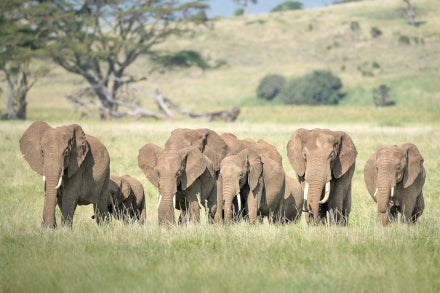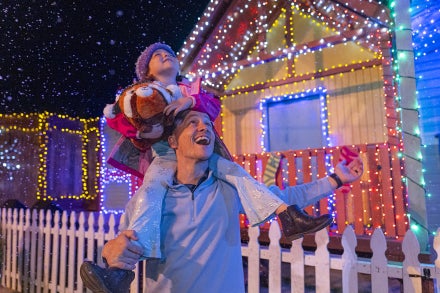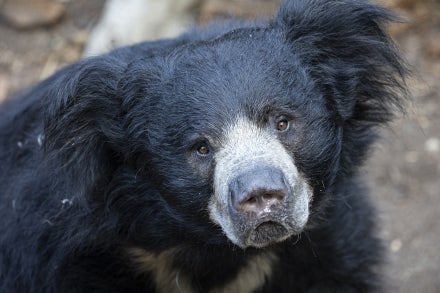
Photo by Zach Pezzillo
The inextricable relationship between people and their environment has lasted for millennia, and here in Hawai'i, this connection is no different. The people of Hawai'i have long understood what it means to live in reciprocity; however, the effects of colonization and the influx of foreign, invasive species have resulted in a staggering decline in overall health of both people and wildlife. As one of the most isolated island archipelagoes in the world with a large human population, Hawai'i is not only home to the many people that live here, but to some of the world's rarest species.
Remembering Relationships
The word “home” carries with it a deep and powerful meaning that we can all relate to—a place where we feel safe, where we find comfort in the familiar, and where we are surrounded by loved ones. It’s where we’re from, where we belong. It is the foundation of our identity, rooted in the land, the sea, the mountains, and the skies that we’ve been linked to for generations. For us, home is not just a place, but a connection to 'āina, which translates to “land” or “that which feed."
The health of 'āina here in Hawai'i has become threatened over the years due to habitat degradation, invasive species, and the spread of introduced diseases. One species, the 'alalā, also known as the Hawaiian crow, plays a key role in a forest’s health. Once abundant across the landscape, the 'alalā population dwindled down to fewer than 20 individuals in the 1990s due to the aformentioned threats. As a result, 'alalā were brought into our care facilities in efforts to increase the population, yet the goal was always clear—to return them to their forest home, where they belong.
To revitalize 'alalā, it was not enough to simply care for them in our centers, the Keauhou Bird Conservation Center on Hawai'i Island and the Maui Bird Conservation Center on the slopes of Haleakalā. Our community had to address the root causes of their decline: habitat restoration, predator control, and the mitigation of disease. Over the years, many hands came together and this work paid off, and the population grew to over 140 individuals. Through collaborative efforts, the forests were restored and protected, and in 2016, a new chapter began.

'Alalā are cared for in aviary buildings like this one at two care facilities in Hawai'i: the Keauhou Bird Conservation Center on Hawai'i Island and the Maui Bird Conservation Center on the slopes of Haleakalā.
Ho'iho'i
Between 2016 and 2020, 30 'alalā were returned to their forest home on Hawai'i Island, where they could once again soar through the canopy, calling back and forth to one another from the treetops. They were finally among their family in the forest—back to the 'āina where they belonged. It was a moment of joy, of hope, of homecoming.
However, by late 2020, 'alalā weren’t thriving in the forest. As their numbers declined, we made the difficult decision with our conservation partners to recall the remaining individuals back to our centers. Fast forward to today, and the hope for the 'alalā continues to grow. In November 2024, we were able to return five more 'alalā to their fores thome on the island of Maui, a significant milestone in the ongoing effort to restore this iconic species. This return marks another step forward in ensuring the ʻalalā’s voices will once again fill the skies of Hawai'i, and that they will thrive in the forests that are their true home.
What does this process look like? Some people call it conservation breeding, or captive propagation. It may sound like a technical term, but this refers to producing offspring to increase the population from fewer than 20 'alalā to a peak of over 140. Some call it a sanctuary—a place of care and protection. We call it ho'iho'i, which translates as “to return, send back, or restore,” and represents what a joyous feeling it evokes.

'Alalā typically lay about three eggs per clutch.
Perseverance and Patience
For us, the work of conservation is about returning the 'alalā home to restore these familial ties to 'āina. Every step taken in the care facilities here in Hawai'i is purposeful, done with the intention of returning them home in a timely and righteous way. But this is not an easy task. It requires patience, attention to detail, and careful observation.
When we care for the 'alalā, we do not simply keep them in an enclosure or a sterile environment. We closely observe their behaviors and needs. We learn what makes them feel comfortable, what makes them feel safe. 'Alalā are part of 'āina, and as a result, part of what feeds us and allows us as people to thrive. In turn, it’s our reciprocal responsibility to provide the utmost care to 'alalā, as we would to our extended family. To help ensure 'alalā are as comfortable as possible,we replicate their forest environment as closely as we can, with aviaries filled with the same native foliage to mimic the natural layers of the forest and curating optimal humidity and rain conditions.
Here we also ensure the infrastructure needed to care for them is in good working condition. The team monitors the birds for any signs of stress or potential health concerns. Every aspect of what we do is attended to with intention and care, so that when the time comes to return ʻalalā to their forest home, they are as ready as possible.

Author Brissa Christophersen enjoying the sight of ‘alalā in their forest home.
Photo by Lauren Shearer
E Ola Mau (May They Live on)
As we all know, the field of conservation is not easy, but it is essential. It is a labor of love, of hope, and of responsibility. The 'alalā are not just birds—they are interwoven threads that make up the fabric of Hawai'i lifeways. They are part of Hawai'i’s story, part of the rich cultural and ecological heritage that has shaped this land. And just as we care for our own, we care for them, so they can thrive once again.
This effort is not just about saving a bird—it is about saving a piece of ourselves, a piece of our home. When the 'alalā return to the forest, itis a reminder of what is possible when we work together. It’s a reminder that no matter how challenging the road may be, we can always return home, and that home will always be there, waiting for us.
In this way, we are not just conserving birds—we are building a better tomorrow for Hawai'i. A tomorrow where the land is filled with life, where the skies are once again filled with the songs of native birds, and where the land is cared for as it has been for generations. There is hope in this work, and hope for the future of the native species of Hawai'i. We are not just returning the 'alalā home—we are ensuring the land, the forests, and the animals who call it home can live and thrive, as they always should.




